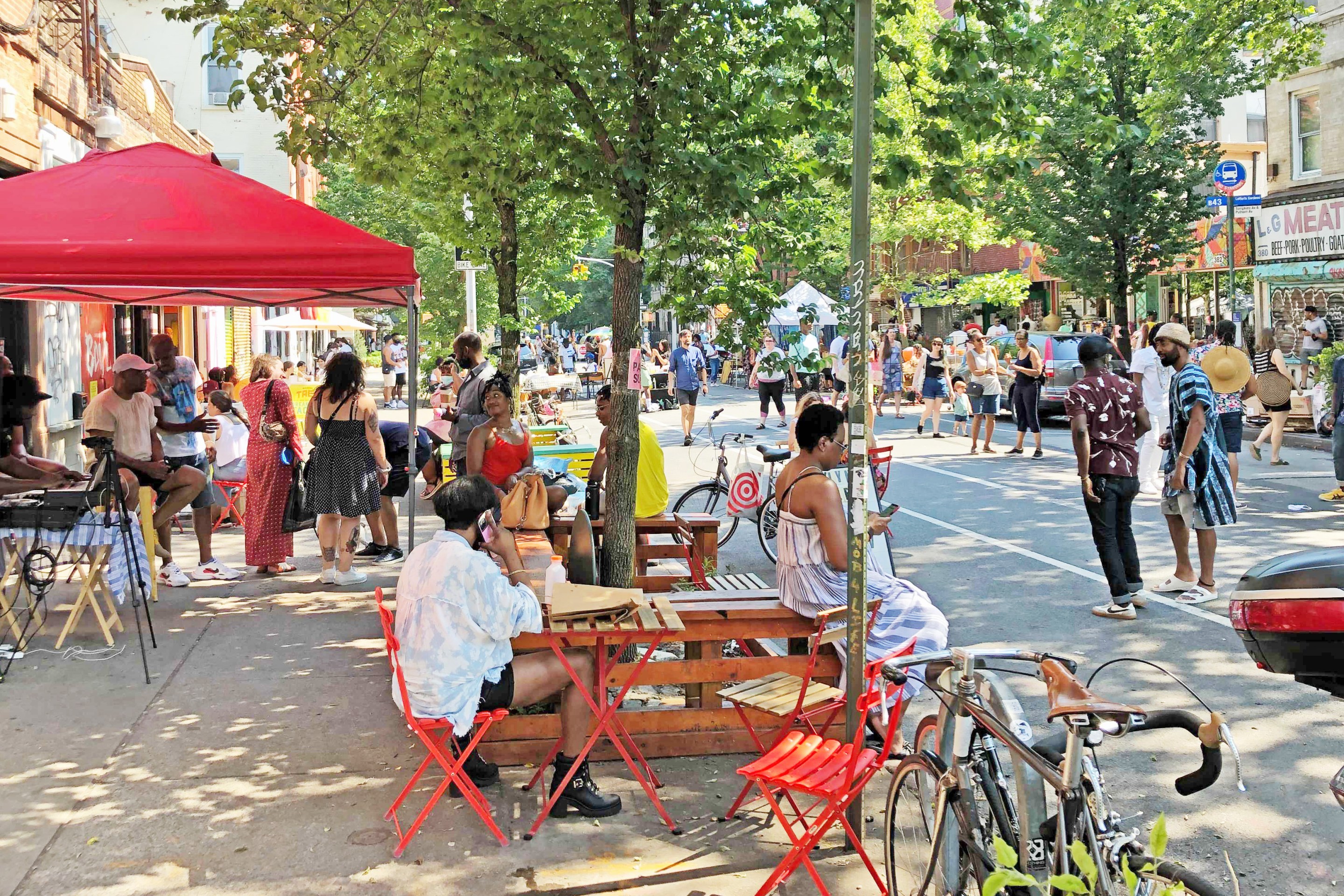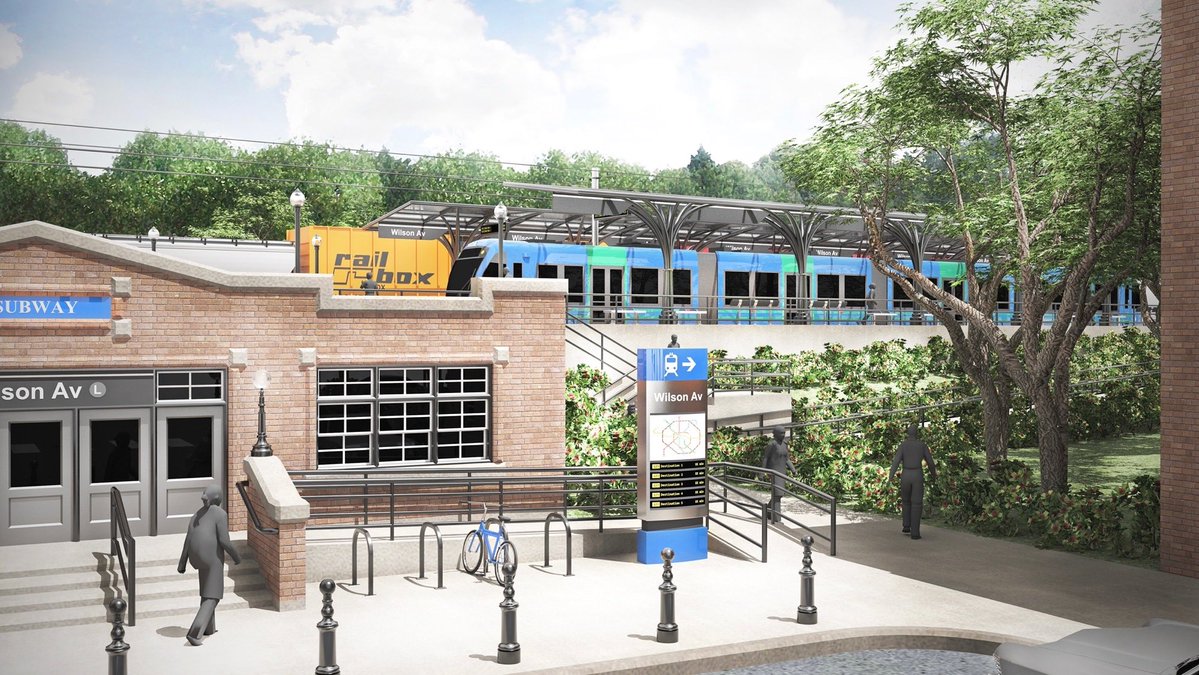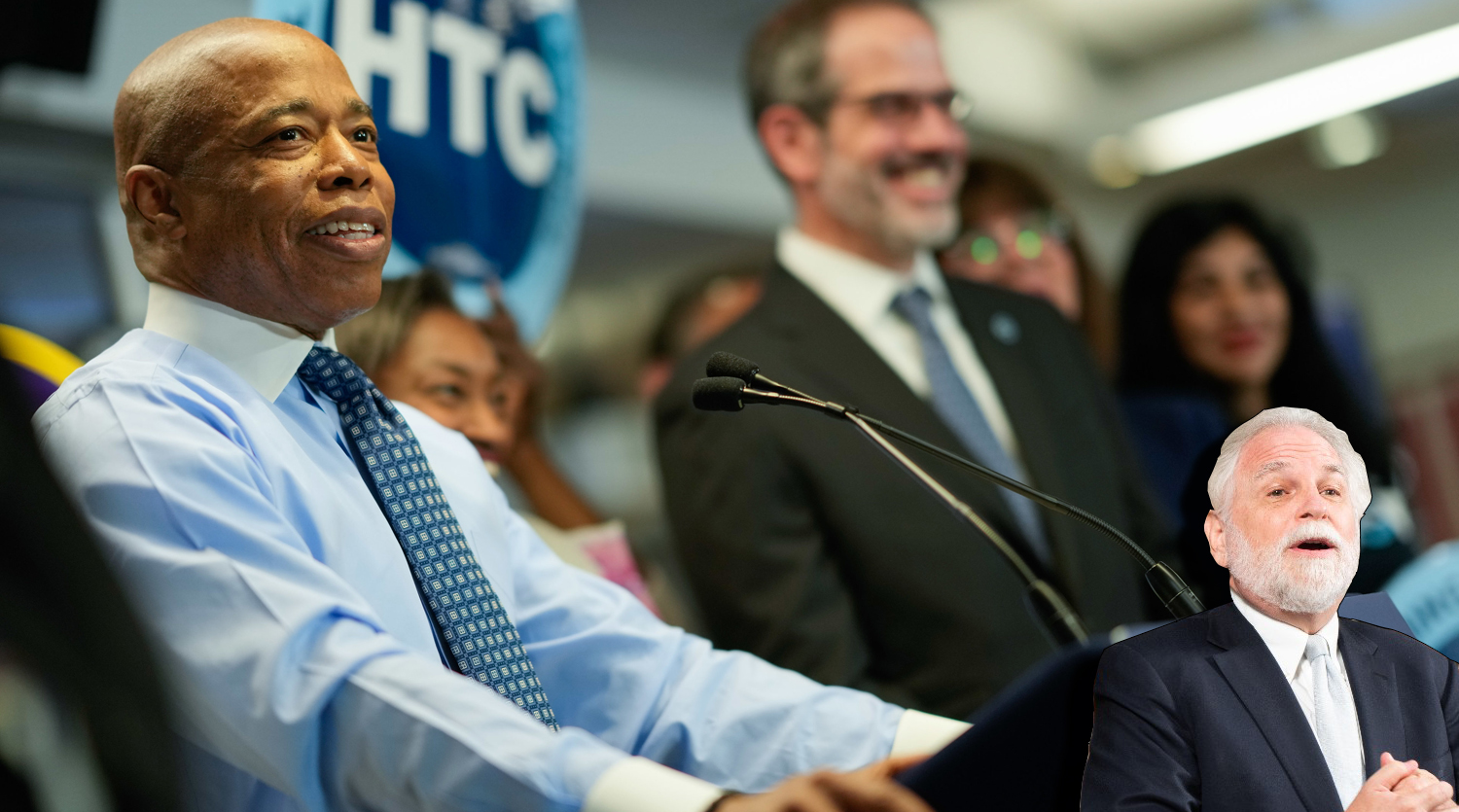Congestion Pricing Foes Sit Down at the Table With Fair Toll Advocates
5:13 PM EDT on March 21, 2014
After years of meetings and tweaks, the Move NY fair toll campaign launched this morning with a simple message: With AAA and trucking interests at the table beside transit advocates, reforming New York's broken toll system actually has a shot. It's a different beast than the congestion pricing plan that Mayor Bloomberg pushed for six years ago, with more obvious benefits for New Yorkers who don't live in Manhattan.
The coalitions are shaping up differently this time, backers noted during a series of panel discussions this morning. "Last time around there was a feeling that this was being shoved down people’s throats," said Move NY campaign director Alex Matthiessen. "We have staunch opponents of previous pricing plans with us."
“It’s a pleasure working with the other side here for a change, instead of being in our own corners," said AAA New York's Jon Corlett. Gene Russianoff, staff attorney for the Straphangers Campaign, compared sitting down with AAA to Nixon visiting China.
Why are these groups willing to work together? The Move NY plan, developed by "Gridlock" Sam Schwartz, has some big carrots for motorists while still reducing congestion and funding transit. The plan would charge everyone driving into Manhattan below 60th Street, while outer-borough crossings with few transit options nearby would see a toll cut. It also asks Manhattanites to pay up by removing the borough's parking tax rebate and adding a surcharge to taxi trips. The plan would raise almost $1.5 billion annually, with a quarter of it going to road and bridge maintenance. The rest would go to transit in the form of both capital funds and operating assistance.
The exact mix of projects that would benefit remains to be determined, but Move NY advocates say they would like to focus on filling outer-borough transit gaps through a mix of bus and rail expansion, funding things like a new transit route on Staten Island's north shore, additional Bus Rapid Transit lines, and new Metro-North service in the eastern Bronx to Penn Station.
To keep things simple and focus on the plan's core fair-toll principle, Move NY has dropped some of the bells and whistles from previous versions of the plan. The plan no longer calls for low-income and off-peak toll discounts, changing Port Authority tolls ("Let sleeping Christies lie," Schwartz said), new bike-pedestrian bridges over the East River, or reconstructing the Belt Parkway to accommodate trucks. These and other tweaks could be added back into the plan later, but Move NY is focused on building support for its central objective: toll reform.
Kendra Hems, president of the New York State Motor Truck Association, supported the Move NY goals of cutting down on car traffic and diverting truckers from busy surface streets, offering a connection to Mayor de Blasio's Vision Zero agenda. “We know that the communities don’t want us there," she said, "and truthfully, our drivers would rather operate in areas with less pedestrian and bicycle traffic, as well."

The spirit of collaboration feels real, but the campaign remains far from the finish line: Backers aren't yet lining up to endorse the plan, which is still open for adjustments, and Move NY is at least a year (and an election) away from launching a full-court press in Albany. "We are not looking for Mayor de Blasio or Governor Cuomo to take a position on this issue," Matthiessen said.
Getting to that point will require the support of outer-borough leaders who opposed the last attempt at road pricing. Council Member Mark Weprin, representing eastern Queens, opposed the 2007 congestion pricing plan as an Assembly member but is open to the Move NY concept now. "There’s a knee-jerk reaction to this plan. A lot of people jump out and hold press conferences," Weprin said in a not-so-veiled reference to his brother, Assembly Member David Weprin, who preemptively came out against the Move NY plan last year.
The Move NY plan would include a lockbox provision written into the legislation, and bonds supported by the toll revenue would include provisions requiring the state to preserve existing MTA revenue sources. But Mark Weprin still had reservations. "You need to assure me and the people I represent, if the tolls are going to go down this year, that they aren’t going to go up the year after," he said. "But I am open to options."
I asked Matthiessen what impact Governor Cuomo's recent toll discounts on the Verrazano-Narrows Bridge might have on the Move NY plan. “It's understandable that he was looking to give them some toll relief," he said, before noting the drawback. "If you reduce tolls, you have to understand that you're losing revenue in the process that is vital to supporting our mass transit system." Matthiessen said he doesn't expect to see more one-off toll discounts around the region. "That's the kind of thing that would undermine support for our toll-swap concept," he said. "We're going to move forward assuming that was just a one-time event."
The plan would also need support from suburban legislators, many of whom oppose the Payroll Mobility Tax, which was created as part of a 2009 MTA funding package. Yesterday in Capital New York, Dana Rubinstein floated the idea of eliminating the tax in exchange for the Move NY plan. Matthiessen said that was a non-starter for many of those interested in the plan. "If you literally swap one for the other, you’d be left with no net revenue," he said, "and for us the whole goal is to have new revenue to invest in our region’s roads, bridges, and transit system."
Today's event featured Kevin Law of the Long Island Association, a business group, but most of Move NY's outreach has focused on the five boroughs. Matthiessen said he'd like to start talking with more legislators on Long Island and in the Hudson Valley.
So far, the lack of attention from legislators and the governor suits Move NY just fine. Transit funding has not been a priority in Albany because other items are taking center stage as the MTA starts to formulate its next capital plan. "It’s not unusual that elected officials are going to focus on those issues that are commanding their attention at the time," Matthiessen said. "We feel confident that Albany is going to focus on this issue when it has to, which is at the end of the year."
Stay in touch
Sign up for our free newsletter
More from Streetsblog New York City
Wednesday’s Headlines: Four for Fifth Edition
The good news? There's a new operator for the Fifth Avenue open street. The bad news? It's four blocks, down from 15 last year. Plus other news.
MTA Plan to Run Brooklyn-Queens Train on City Streets a ‘Grave’ Mistake: Advocates
A 515-foot tunnel beneath All Faiths Cemetery would slightly increase the cost of the project in exchange for "enormous" service benefits, a new report argues.
Full Court Press by Mayor for Congestion Pricing Foe Randy Mastro
Pay no attention to that lawyer behind the curtain fighting for New Jersey, the mayor's team said on Tuesday, channeling the Wizard of Oz.
Tuesday’s Headlines: Valley of Political Death Edition
Did you see the new poll showing congestion pricing is really unpopular? Ignore it! Good times are coming. Plus other news in today's headlines.
Open Streets Groups Warn of Extra Red Tape to Run Events
Two weeks notice for hopscotch or a yoga class?




